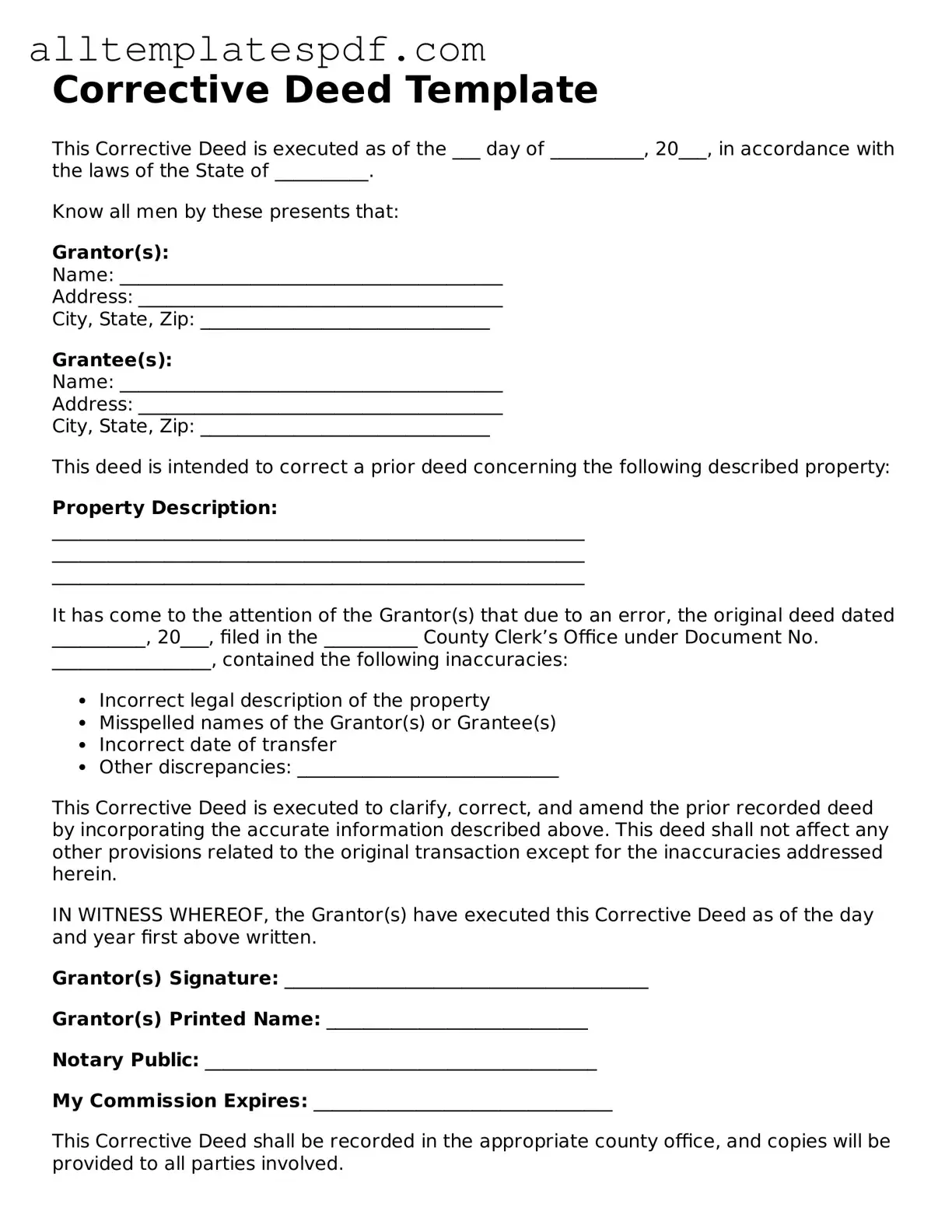When filling out a Corrective Deed form, it’s easy to make mistakes that can lead to complications down the road. One common error is not providing accurate property descriptions. Every detail matters. If the legal description of the property is incorrect, it can create confusion about ownership and rights.
Another frequent mistake involves the names of the parties involved. People sometimes misspell names or fail to use the full legal names as they appear on official documents. This can lead to disputes or delays in the processing of the deed. Always double-check the spelling and ensure that all names are consistent with existing records.
Some individuals overlook the need for proper signatures. A Corrective Deed must be signed by all parties involved in the transaction. If even one signature is missing, the deed may be considered invalid. It's crucial to ensure that everyone required to sign has done so before submitting the form.
Additionally, failing to include the necessary notarization is another common pitfall. Most states require that deeds be notarized to be legally binding. If the notarization is missing or improperly completed, the deed may not hold up in court. Always verify that the notary has filled out the required information correctly.
People also sometimes forget to include the date of execution. This detail is vital, as it establishes when the deed was signed and can affect the timeline of ownership transfer. Without a date, the deed could face challenges regarding its validity.
Lastly, many individuals neglect to check local laws and regulations regarding Corrective Deeds. Each state has its own rules, and what works in one jurisdiction may not apply in another. It’s essential to familiarize yourself with these requirements to avoid unnecessary complications.
